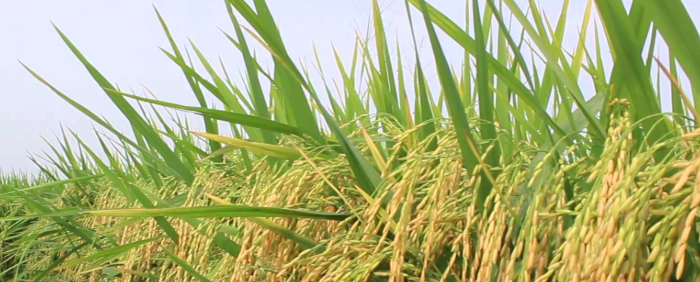
Eat more complex sugars and fewer simple sugars! This is the advice that comes in the mouths of all health professionals. But in which category is rice placed? This cereal contains starch, and therefore complex sugars. It should therefore eat very regularly, because its satiating power avoids snacking. In parallel with this appetite suppressant, rice has many other health benefits …
To each rice its qualities!
Supermarkets are full of different types of rice. Each rice has real peculiarities … Brown rice is the most nutritious (115 calories per 100g). He owns the most fiber (1.5 g of fiber per 100 g) because only the inedible shell of the grain has been removed. In the white rice category (109 calories and 0.4 g of fiber per 100 g), parboiled white rice is more nutritionally interesting than the others because the parboiling stage migrates certain nutrients to the center of the grain: we are less likely to lose them later! Minute rice seems to be the least advantageous, because of the many treatments that are used and which alter or remove its compounds. It will therefore be necessary to choose between nutrition and practicality!
The health authorities advise, for their part, to focus on the consumption of whole grains. It could be linked to a lower risk of cardiovascular disease, diabetes, some cancers and obesity, because the sound and the germ contain in large quantities fiber, antioxidants, vitamins and minerals. At present, the French eat an average of 4.5 kg of rice a year. What about Burma, where its consumption reaches 188 kg per inhabitant!
Last key point: the protein content of the rice grain. This depends on the variety used, the spacing of plants in cultivation and the use of nitrogen fertilizers. Similarly, constraints such as drought, salinity, high or low temperature, diseases, etc. can increase the protein content of some rice varieties .
The Camargue, 98% of French rice production
But before it is mainly the variety of rice that determines its composition. In France, the French Rice Center (CFR) works to select the varieties adapted to growing conditions and user requirements. A mission that leads each year to the production of one to two new varieties. All varieties of the Mediterranean type listed in the French Catalog of Varieties were selected by the CFR. And they are especially adapted to the Camargue climate, because this region provides 98% of the rice production in France!
Irrigated rice cultivation accounts for about 12,000 hectares … and only 260 of them are dedicated to seed production . The reason: the rice intended for propagation can not return to the same plot for five years to avoid contamination, which guarantees the purity of the seeds.
How is rice produced?
Its impoundment and sowing take place from mid-April or mid-May. Rice is sown on the fly, with 160 to 220 kg of seed per hectare. Then, the crucial stage of the production concerns the emergence: on 700 to 900 seeds launched per m², only 250 plants will develop. This is why vigor at emergence is a particularly sought-after trait in the selection phase of new rice varieties .
During rice growth, competing with weeds is the biggest barrier to good yield. It is extremely difficult to control the growth of these unwanted plants. Finally, at the end of August, flowering occurs. The plots, which were immersed in five to ten centimeters, are dried three weeks to one month before the harvest, which takes place from September 15 to October 15. This occurs when the rice grains have reached a moisture level of 20 to 24%.
Regarding yield, the food rice is between 70 to 92 net quintals after sorting operations, depending on the variety. Recall that today, we cultivate two species of rice, Oryza sativa, or Asian rice, and Oryza glaberrima, or African rice. Nevertheless, the Asian species is the only species to be cultivated on a large scale in countries with a favorable climate. It is therefore also the most cultivated in Africa!
The origins of domestic rice
China and India are fighting over the paternity of domestic rice. At the end of 2010, new data attracted the attention of archaeologists. An article in La Recherche detailed the approach of experts to determine the date when wild rice cultivation began, and when it was completely transformed into domestic rice. By studying very finely the spikelet, that is to say the small spike which contains the flower of the rice, in the remains of plants found in China, south of Shanghai, the researchers were able to follow the domestication of the rice: it has become more and more frequent from 4,900 to 4,600 BC. Finally, around 4,500 to 4,000 BC. J. – C., the rice is definitely domesticated in China and cultivated intensively.
On the Indian side, the oldest rice is currently dated to 6,500 BC. BC, which seems to give them the greatest seniority, but it is necessary to wait 2,500 to 2,000 BC. In order to have tangible proof that this rice is well cultivated and domesticated. The domestication in India and China could have occurred in parallel because the sub- speciesIndian and Chinese were hybridized early in the domestication process. Indeed, they share key mutations that have appeared since these rice became domestic: one of them allowed that the grain of rice does not become detached from the plant once ripe, which makes it possible to harvest it more easily, and another has generated a upright and high domestic rice plant, unlike wild rice which is lower and deployed.